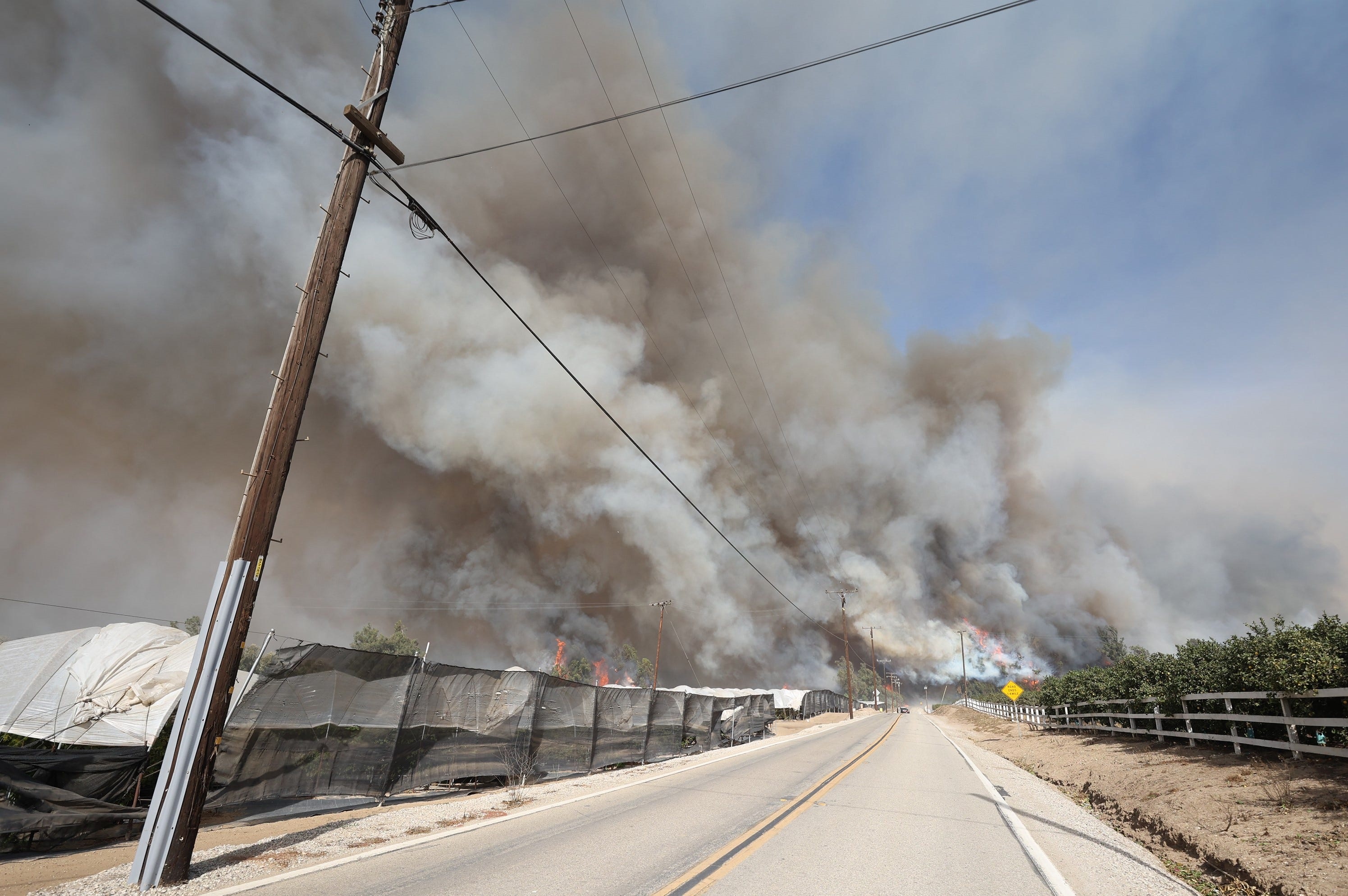As unpredictable as wildfires may be, the response to them has become very predictable.
When the Mountain Fire broke out this week in Ventura County amid a strong Santa Ana wind event, fire crews and other first responders were already on standby, ready to respond at a moment’s notice.
“I guess in some ways you could say it's probably the best organized chaos you can go through,” said Chief Sam DiGiovanna with the Verdugo Fire Academy. “Ventura County Fire Department and the mutual aid resources did an incredible job.”
It’s not an accident.
Get top local stories in Southern California delivered to you every morning. >Sign up for NBC LA's News Headlines newsletter.
DiGiovanna and the Verdugo Fire Academy help train firefighters for major incidents like the Mountain Fire, where even amid fighting the flames and battling dangerous winds, the priority becomes saving lives and property, and it’s done strategically.
“You're thinking of protecting lives, stopping this fire, stopping the spread of it, evacuating people. That incident commander has a lot going through his or her mind,” he said. “The incident commander will set up structure protection in certain areas. Sheriff's department or the law enforcement will start doing evacuations, so it is unified command with a lot of entities and additional fire resources coming in.”
That wasn’t always the case.
In the past, many firefighters would end their careers with two to three major wildfires under their belt, but in recent years, fires of this magnitude have become more common.
“Fires long ago, they would pull up and they did not have couplings in hoses that matched, radio frequencies or equipment. It was it was pretty chaotic,” he explained. “The equipment is far more superior and the mutual aid, you know, is a lot more progressive than when I first started. It's more organized. Used to be a lot more freelancing when I first started in. That got us in a lot of trouble.”
With more than three decades in fire service, DiGiovanna said he has seen a major shift towards systematically fighting fires.
Agencies go into what’s called “Unified Command,” where federal, state and local first responders coordinate to create a plan and take acton immediately.
“Here's the sequential order, the protection of life, property and the environment, the minute that we get this call,” DiGiovanna said. “We do pre-positioning of strike teams during these red flag alert days, and they were doing pre-positioning of strike teams.
“However, once we know that this was going to be an extended event like this fire with these winds, the incident commander will start calling for additional resources,” he added.
The Mountain Fire comes on the six-year anniversary of the Woolsey Fire, one of the most destructive in California history.
That came one year after the record-setting Thomas Fire.
Both began in Ventura County and both fires ended with post-fire analysis among all the various agencies and utilities involved to determine what went right and what went wrong.
That type of analysis is what leads to the well-executed plan used in the Mountain Fire.
“They did an incredible job. Unbelievable,” DiGiovanna said. “And I have to say this, that we’re getting good at this probably because we’re seeing this more frequent.”
On Thursday, Ventura County officials said more than 130 homes and buildings were destroyed, but DiGiovanna points out, thousands more were saved and, more importantly, no people were killed.
He said it’s evidence that the trainings and the coordinated efforts to fight fires and save lives are working.
“I really cannot be more proud of them,” DiGiovanna said. “This event will soon be over and there's going to be a lot of work ahead of them, but if another fire breaks out today, they'll get up and do it all over again.”



